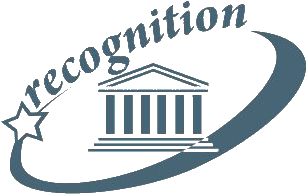Japan
The country is a member of the Asia-Pacific Regional Convention on the Recognition of Qualifications in Higher Education (Tokyo Convention). More detailed information about the country's education system can be found on the official website of the ENIC/NARIC regional network (APNNIC): https://apnnic.net/country-profile/japan/
Education
The education system of Japan starts with pre-school education, followed by six years of elementary education, and six years of secondary education (comprised of three years of lower secondary and three years of upper secondary education), which leads to a wide range of higher education. The nine years of elementary and lower secondary education cover compulsory education.
The principles of education in Japan are established by the Basic Act on Education (教育基本法). The basis of the school education system is defined by the School Education Act (学校教育法).
In relation to elementary and secondary education, typical institutions include elementary schools (小学校 shogakko) for elementary education and lower secondary schools (中学校 chugakko) and upper secondary schools (高等学校 kotogakko) for secondary education.
In addition, in 1998, it became possible to establish six-year Secondary Education Schools (中等教育学校 chuto-kyoiku-gakko) which combine lower and upper secondary education, and in 2016, it became possible to establish Compulsory Education Schools (義務教育学校 gimu-kyoiku-gakko) which combine elementary and lower secondary education.
For the upper division of Secondary Education Schools and upper secondary schools, there are also schools that offer part-time courses (定時制 teiji-sei) in the evening or at other specific times, correspondence courses (通信制 tsushin-sei) that offer distance education, and 高等専修学校 koto-senshu-gakko which is Upper Secondary Courses of Specialized Training Colleges (専修学校高等課程 senshu-gakko-koto-katei).
Higher Education System
There is no legal definition on the scope of HEIs in Japan.
The scope of higher education institutions (HEIs), subject to the Asia-Pacific Regional Convention on the Recognition of Qualifications in Higher Education (known as the Tokyo Convention) is defined by the “Guideline on Recognition of Higher Education Qualification – Asia-Pacific Regional Convention on the Recognition of Qualifications in Higher Education” (Japanese language only).
According to the Guideline, HEIs include universities (大学), graduate schools (大学院), junior colleges (短期大学), Colleges of Technology (KOSEN) (高等専門学校) , and Professional Training Colleges (専門学校) (except for Prefectural Colleges of Agriculture), and three educational institutions operated by government ministries and agencies (省庁大学校). Based on the type of establishing body, HEIs are categorized as national (国立), public (公立), or private (私立).
Under the category of “university”, there are undergraduate programmes, junior colleges, and graduate schools. Within them, universities and junior colleges that aim to educate professionals through a high-quality vocational education are Professional and Vocational Universities (PVU, 専門職大学) and Professional and Vocational Junior Colleges (PVJC, 専門職短期大学), and graduate schools that specialize in fostering highly-specialized professionals with flexible and practical education, known as Professional Graduate Schools (専門職大学院).
According to the School Basic Survey, as of May 1, 2019, there were 786 universities (including undergraduate and graduate schools), 326 Junior Colleges, 57 Colleges of Technology, 2,805 Professional Training Colleges, and 3 educational institutions operated by government ministries and agencies in Japan.






